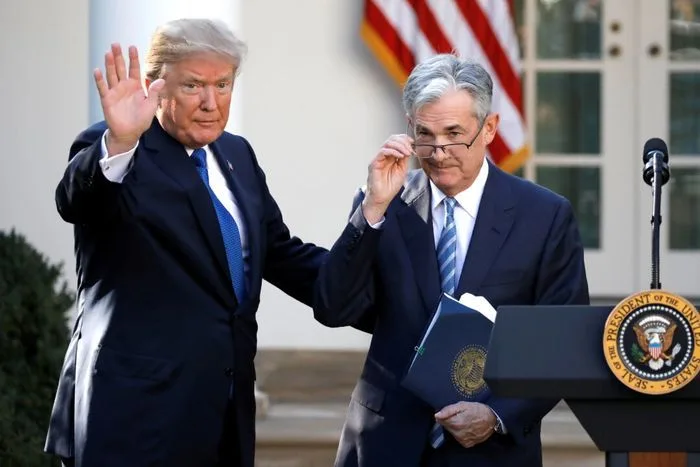
Fed’s Powell Says Interest Rate Decisions Will Be ‘Non-Political’ in Meeting With Trump
By Tom Ozimek
President Donald Trump told Federal Reserve Chair Jerome Powell at a White House meeting on May 29 that the central bank chief erred in not lowering borrowing costs, while Powell said decisions on interest rates would remain grounded in economic data and free from political influence.
According to a brief readout from the Fed, Powell did not discuss his expectations for the timing or pace of future rate cuts but said that all policy moves would be based “entirely on incoming economic information and what that means for the outlook.”
“Chair Powell said that he and his colleagues on the FOMC [Federal Open Market Committee] will set monetary policy, as required by law, to support maximum employment and stable prices and will make those decisions based solely on careful, objective, and non-political analysis,” the Fed said.
The central bank’s benchmark interest rate currently stands at 4.25 to 4.5 percent.
The meeting, held at Trump’s request, came amid intensifying pressure from the president to ease monetary policy. Trump has said that rates are too high given that inflation has dropped significantly and that Powell should cut them further—a move the president believes would help boost economic competitiveness, particularly against rivals like China.
White House press secretary Karoline Leavitt told reporters at a briefing after the meeting that Trump “believes the Fed chair is making a mistake by not lowering interest rates, which is putting us at an economic disadvantage to China and other countries.” She added that the president has been “very vocal” about that both in public statements and in private meetings.
Leavitt also confirmed that Trump did not discuss firing Powell or replacing him before his term expires in May 2026. Speculation has been swirling over who might succeed Powell, with Treasury Secretary Scott Bessent recently suggesting the White House would begin a search this fall. Bessent floated the idea of appointing a “shadow Fed chair” to help guide market expectations during the transition, although the Treasury chief has also said Powell should be allowed to serve out his term.
Thursday’s meeting at the White House marked the first official sit-down between Trump and Powell during the president’s second term. While such encounters are rare due to the Fed’s politically independent mandate, they are not unprecedented. Trump previously hosted Powell for lunch during his first term.
Since being sworn in for a second term, Trump has grown increasingly critical of Powell’s decision-making. In an April 21 social media post, he dubbed him “Mr. Too Late” and accused the Fed chief of slowing the economy by being hesitant to cut rates. A few days prior, Trump said Powell’s “termination cannot come fast enough” and hinted he could remove him from his post quickly if he wanted to. By April 22, Trump had softened his tone, saying he had “no intention of firing him” while again urging the Fed to act.
“I would like to see him be a little more active,” Trump said during an Oval Office ceremony on April 22. “This is a perfect time to lower interest rates.”
Trump’s pressure on Powell to drop rates comes as inflation has fallen significantly from recent highs.
Consumer price inflation rose 2.3 percent annually in April, according to the Bureau of Labor Statistics, the lowest reading since early 2021. Wholesale price inflation also dropped, with the Producer Price Index (PPI) falling to 2.4 percent in April—its steepest decline since the COVID-19 pandemic.
Despite these trends, Fed officials have signaled caution. Minutes from the most recent Federal Open Market Committee meeting reveal growing concern about both upside inflation risks and softening labor market conditions. The Fed’s staff economists have downgraded growth forecasts for 2025 and 2026, citing trade-related uncertainty and potential economic headwinds.
“Risks to real activity were seen as skewed to the downside,“ the minutes read. ”And the staff viewed the possibility that the economy would enter a recession to be almost as likely as the baseline forecast.”
Futures markets expect the central bank to hold rates steady through June and begin cutting in September. Changes to the Fed’s interest rate ripple through the economy, shaping the cost of borrowing for everything from mortgages and auto loans to business financing.


